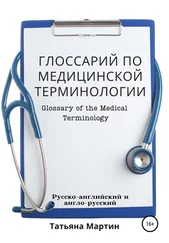Acetylsalicylic acid (as most clinicians still choose to call it), or aspirin (the name practically everyone else prefers), or Aspirin (as its original proprietors were profitably privileged to insist on its being called until the general expiration of their patents around 1917), is an extraordinary drug. Almost everything about it is unusual. It comes, for one thing, impressively close to being the oldest therapeutic agent in continuing active demand. Only such venerable specifics as quinine (for malaria), colchicum (for gout), digitalis (for cardiac weakness), and, perhaps, the bromides (for relief of nervous tension) are of greater age and durability. Unlike these tottering centenarians, however, it has more than merely held its own against the massive ingenuities of mid-twentieth-century pharmacology. In 1935, the annual consumption of acetylsalicylic acid in the United States was estimated at four million pounds. By 1944, it had risen to nearly eight million. According to the least galvanic estimates, it now exceeds eleven million pounds, or, in terms of the standard dosage, approximately sixteen billion five-grain tablets. The true figure is probably well in excess of that, for, in general, such estimates refer only to the acetylsalicylic acid that is marketed under the name of aspirin. They seldom include that contained in the several more recently developed proprietary preparations—Bufferin, Anacin, Empirin, and Alka-Seltzer, among others—of which it is a major ingredient. The popularity of acetylsalicylic acid is almost equally immoderate elsewhere in the world. In some countries, notably Canada and those of Western Europe, it has, if anything, inspired an even fiercer veneration (England, for example, with hardly a fourth the population of the United States, consumes at least three million pounds of it a year), and there are no countries in which it is unknown, unappreciated, or unavailable. It is, in fact, the most widely used drug on earth. It is also the cheapest (a five-grain tablet costs about half a cent), one of the safest (many aspirant suicides have survived doses of more than two hundred grains), and, among drugs of a comparable nature, including its companion salicylates, without much doubt the best. Some authorities go further than that. They consider it the most generally useful drug in the entire armamentarium of medicine.
It is not hard to understand why. The great majority of drugs, as the heft of the modern pharmacopoeia is enough to suggest, are more conspicuous for the refinement than for the variety of their therapeutic feats. Hundreds, like insulin (the specific for diabetes melitus) and heparin (an anticoagulant), are limited in usefulness to one particular function, and there are many hundreds more whose present scope is only a trifle less narrow. Even the widest-ranging antibiotics, for all the multiplicity of horrors—anthrax, brucellosis, endocarditis, meningitis, tularemia, and syphilis, among others—over which they have an almost sovereign domination, are anything but widely effective. Their range is wholly confined to diseases of infectious, or microbial, origin. Acetylsalicylic acid is differently endowed. Although it is incapable of mastering any disease, it possesses a masterful sweep. Few drugs embody more, or more various, powers. As an analgesic, an antipyretic, an antirheumatic, and—or at least so a recent study at the Boston University School of Medicine, in which it appeared to show a marked capacity for preventing the recurrence of kidney stones, would suggest—an anticalculus, its palliative reach embraces practically all the smaller miseries, as well as some of those of considerable stature, that try the human race.
Just how acetylsalicylic acid performs this symphony of services has yet to be fully fathomed. Fifty years of investigation have illuminated little more than the general route it follows through the body. Salicylic acid, the active principle of the drug, is absorbed directly from the small intestine into the blood stream. It remains there, moving with the current of the circulation, for, in most cases, ten to fourteen hours. It then passes into the kidneys and is excreted in the urine. It is also known to form in the kidneys a compound called glucuronide, whose presence increases the solubility of calcium—a phenomenon that would seem to explain its apparent anticalculous action. The essential physiology of the acid is otherwise very largely opaque. About the only further probability is that each of its distinctive effects is achieved by a different mechanism. There is no possible functional connection between its capacity for generating glucuronide and any of its other attributes, and it seems almost as certain that the processes by which it blocks pain, reduces fever, and suppresses joint inflammations are also completely unrelated. Of these three established powers, the first is the least mysterious. Most physiologists believe that the site of salicylic acid's analgesic action is the thalamus, the chief sensory reception center, located in the forebrain. There, in some obscure manner, the acid (or impulses set in motion by it) impedes the normal transmission of stimuli conveying the sensation of pain. The best evidence suggests that acetylsalicylic acid has the power to raise the threshold against pain perception by about thirty-five per cent. "A very small dose of aspirin has a measurable effect in raising the pain threshold," Stewart Wolf, head of the Department of Medicine of the University of Oklahoma School of Medicine, and Harold G. Wolff, professor of medicine at the Cornell University Medical College, noted in a recent monograph. "Increasing the dose has a progressively greater effect up to about ten grains, beyond which no additional pain-killing effect is manifest, although larger doses do somewhat prolong the duration of effect. With ten grains of aspirin, maximum effect is achieved in about one and a half hours. Thereafter its action in raising the pain threshold begins to dwindle. The effect can be kept at a peak most satisfactorily not by giving larger doses but by frequently repeating the ten-grain dose, say at two-hour intervals. . . . Combinations of analgesic drugs are no more effective than is the single strongest drug in the combination. The most that can be achieved in terms of deadening pain is the effect of ten grains of aspirin." This, of course, is not to say that acetylsalicylic acid is the strongest of all analgesics. It is merely the strongest that can be safely used without medical supervision. Morphine, for example, is capable of raising the threshold against pain perception as high as seventy per cent, but it also affects pain reaction; that is, it simultaneously blocks the passage of stimuli conveying such sensations as tension and anxiety. The artificial avoidance of tension and anxiety is the basis of addiction. Acetylsalicylic acid has no effect whatever on pain reaction.
Almost nothing is known about the way acetylsalicylic acid functions as a febrifuge. There are no absolute data on the dynamics involved, and only a few reasonably firm hypotheses. The firmest of these concern the general procedure by which a reduction of fever is accomplished. It was once held that the phenomenon could be ascribed largely to a braking action on the machinery of heat production. Recent research has substantially altered this view. The explanation now in vogue suggests that antipyresis results primarily from a simple quickening of the body's natural facilities, for releasing excessive heat—the peripheral blood vessels and the sweat glands. Its ultimate cause, as currently envisioned, is more complex. Animal experiments have demonstrated that, contrary to snap assumption, this hyperactivity is induced not by direct stimulation of the superficial thermostatic apparatus but indirectly, through the central nervous system. In the opinion of most investigators, the specific focus of impact is probably one or another of the numerous regulatory nuclei that are clustered near the midbrain. Beyond this point, however, all suppositions falter. The nature of the power that acetylsalicylic acid has over these nuclei eludes even the nimblest imaginations, except for one twilit hypothesis: The control it exerts would seem to be somewhat less than total. For, as a mountain of empirical evidence makes clear, its influence is limited to remission of fever. It is peculiarly, and providentially, incapable, even in massive doses, of forcing the temperature of the body below 98.6 degrees, or normal.
Читать дальше












